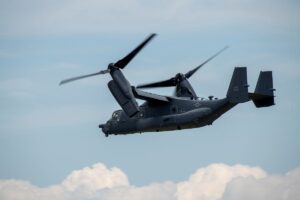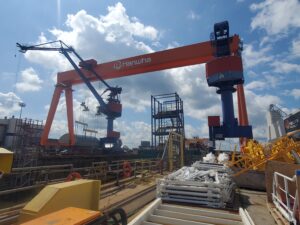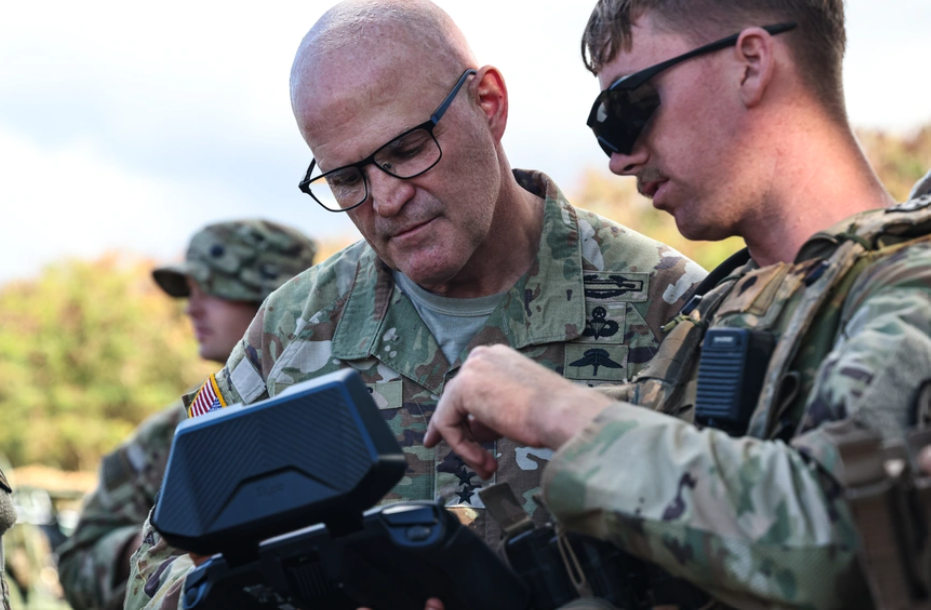Defense Daily
-
 Air Force
Air ForceGAO: Osprey Accident Rate Increased In 2023, 2024, Air Force And Marine Corps Not Doing Enough To Share Info
A new independent government audit found the Marine Corps and Air Force V-22 Osprey tiltrotor aircraft’s rates of “serious accidents” dramatically increased in fiscal years 2023 and 2024 while calling […]
-
 Army
ArmyArmy Places $433.2 Million Order With Sikorsky For 24 More Black Hawks
The Army last Friday awarded Sikorsky [LMT] a $433.2 million order for delivery of two dozen more Black Hawk helicopters. The deal covers the fifth program year for Sikorsky’s Multi-Year […]
-
 Army
ArmyGD Has Delivered First M1E3 Abrams Tank Prototype, Army Chief Says
The Army has received the first prototype of the new M1E3 Abrams tank from General Dynamics [GD] Land Systems [GD], the service’s top uniformed official recently confirmed. Gen. Randy George, […]
-
 Unmanned Systems
Unmanned SystemsMatrixSpace Nabs Top Spot In DoD Counter-Drone Low-Cost Sensing Challenge
The Defense Innovation Unit (DIU) last Friday said it and its partners have awarded MatrixSpace Inc., the $500,000 top prize based on a challenge in the fall to demonstrate low-cost […]
-
 Defense Watch
Defense WatchDefense Watch: Golden Dome, GD Summit, Space Names, DoD AI
Golden Dome Industry Talks. Space Force Gen. Mike Guetlein, head of the Golden Dome initiative, recently minimized concerns about too much secrecy on the Golden Dome architecture and what the […]
-
 Space
SpaceSolicitation For Agile Space Effort Held Up By SBIR/STTR Funding Issue
ORLANDO, Fla. — The Space Force’s Rapid Capabilities Office (RCO) is preparing a request for proposals (RFP) around agile space capabilities, but it is held up due to the status […]
-
Friday, December 12, 2025
- Lawmakers Seek To Fence Off Half Of NGC2 Funding Until Army Provides More Details
- Kelly Says SHIPS Act Moving Forward, Skeptical Of Golden Dome SBIs
- L3Harris Delivers First Production Meadowlands Satellite Jammer To Space Force
- Final FY ‘26 NDAA Backs Army’s Early Production Push For FLRAA
- DoD Advisor Confirms Potential To Build Navy Warships Outside U.S. Akin To ICE Pact
- Northrop Grumman’s SiAW Completes Separation Test From F-16
- DIU Selects Teams To Help INDOPACOM With AI Solutions To Track “Blue Objects”
-
Friday, December 12, 2025
- Lawmakers Seek To Fence Off Half Of NGC2 Funding Until Army Provides More Details
- Kelly Says SHIPS Act Moving Forward, Skeptical Of Golden Dome SBIs
- L3Harris Delivers First Production Meadowlands Satellite Jammer To Space Force
- Final FY ‘26 NDAA Backs Army’s Early Production Push For FLRAA
- DoD Advisor Confirms Potential To Build Navy Warships Outside U.S. Akin To ICE Pact
- Northrop Grumman’s SiAW Completes Separation Test From F-16
- DIU Selects Teams To Help INDOPACOM With AI Solutions To Track “Blue Objects”
-
 Navy/USMC
Navy/USMCKelly Says SHIPS Act Moving Forward, Skeptical Of Golden Dome SBIs
A key backer of the SHIPS for America Act (S. 1541) this week argued it is not bogged down in committee any longer and also expressed strong skepticism of spending […]
Tagged in: -
 Navy/USMC
Navy/USMCDoD Advisor Confirms Potential To Build Navy Warships Outside U.S. Akin To ICE Pact
An advisor to Defense Department leaders this week confirmed the Navy is still considering building warships outside U.S. shipyards to boost fleet numbers, comparing the idea to the ICE Pact […]
Tagged in:

